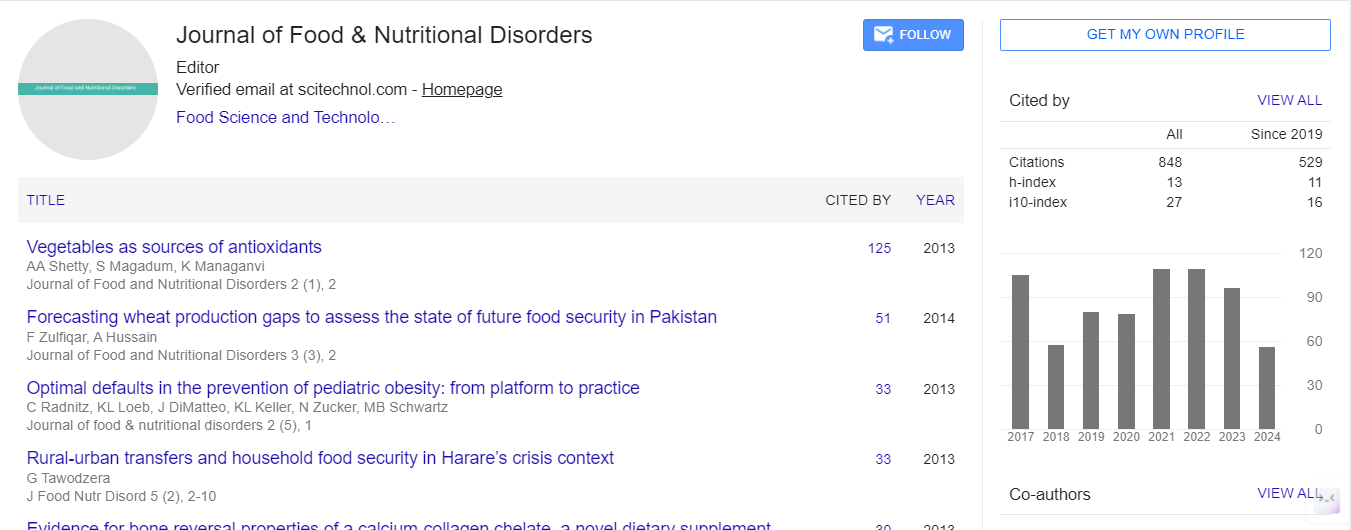Spirulina liquid extract prevents glucose intolerance and NAFLD in mouse
Khadija Ouguerram, Coue, Angela Tesse, Juliette Falewee, Lionel Fizanne, Michel Krempf, Jean Michel Pommet and Olivier Lepine
Universite de Nantes, France
: J Food Nutr Disor
Abstract
Nonalcoholic Fatty Liver Diseases (NAFLD) are the hepatic manifestation of metabolic syndrome and develop in people who have no history of alcohol abuse but show an accumulation of neutral lipids up to 5.5% in hepatocytes. The first stage of NAFLD panel disease is a simple steatosis that develops in 90% of obese people. An inflammatory context will help the progression to non alcoholic steatohepatitis (NASH) with or without fibrosis that can deteriorate to cirrhosis, an end-stage liver disease requiring transplantation. The most accepted underlying scenario is the multiple-hit hypothesis. This proposes that a systemic Insulin Resistant (IR) state increases hepatic de novo lipogenesis (DNL), adipose tissue lipolysis and inhibit the export of lipids from the liver. So this context lays the foundation for an accumulation of ectopic lipotoxic species in the liver. These lipids induce mitochondrial dysfunction, oxidative stress, endoplasmic reticulum stress, leading to an inflammatory environment. Spirulina is a cyanobacteria with photosynthetic activity. This organism contains a high concentration of anti-oxidant molecules (OA) such as Phycocyanines (PC). A lot of article research highlighted its powerful benefits as AO, immunomodulatory, antiinflammatory activities. Furthermore the innovation of this product lies on the fact that only the cellular wall is removed, so contrary to powder, Spirulina Liquid Extract (SLE) keeps allhydrophilic cytoplasmic molecules in their native and so functional form.
Results: Our results suggest that Spirulina liquid extract protects against metabolic disorders induced by Western Diet specifically glucose intolerance, non alcoholic steatohepatitis and hypercholesterolemia. These observations were associated with a less gall bladder hydrophobic biliary acid profile and a significant increase of ursodeoxycholic acid. Furthermore, ursodeoxycholic acid levels significantly and inversely correlated with AUC GTT, plasma cholesterol, liver weight to body weight ratio, plasma ALA and liver fibrosis.
Biography
E-mail: khadija.ouguerram@univ-nantes.fr
 Spanish
Spanish  Chinese
Chinese  Russian
Russian  German
German  French
French  Japanese
Japanese  Portuguese
Portuguese  Hindi
Hindi 
